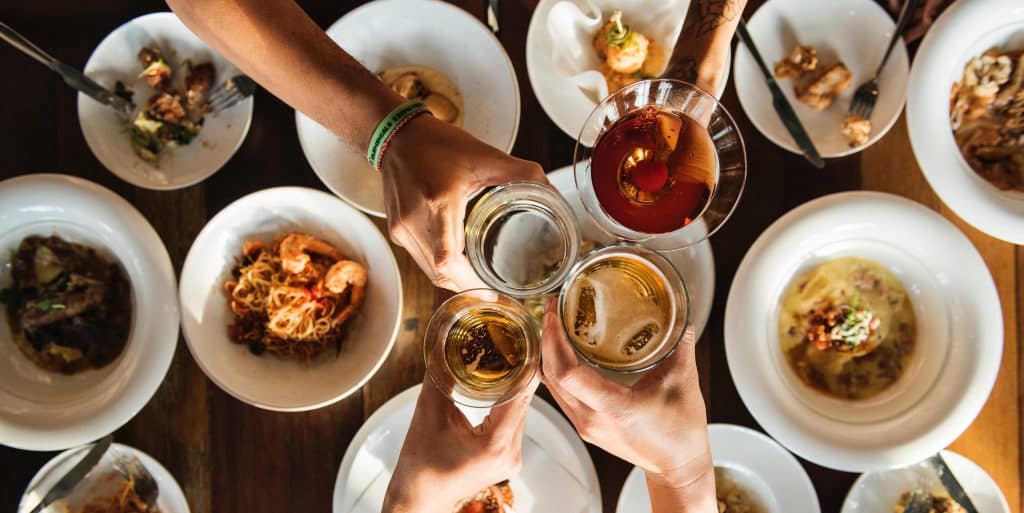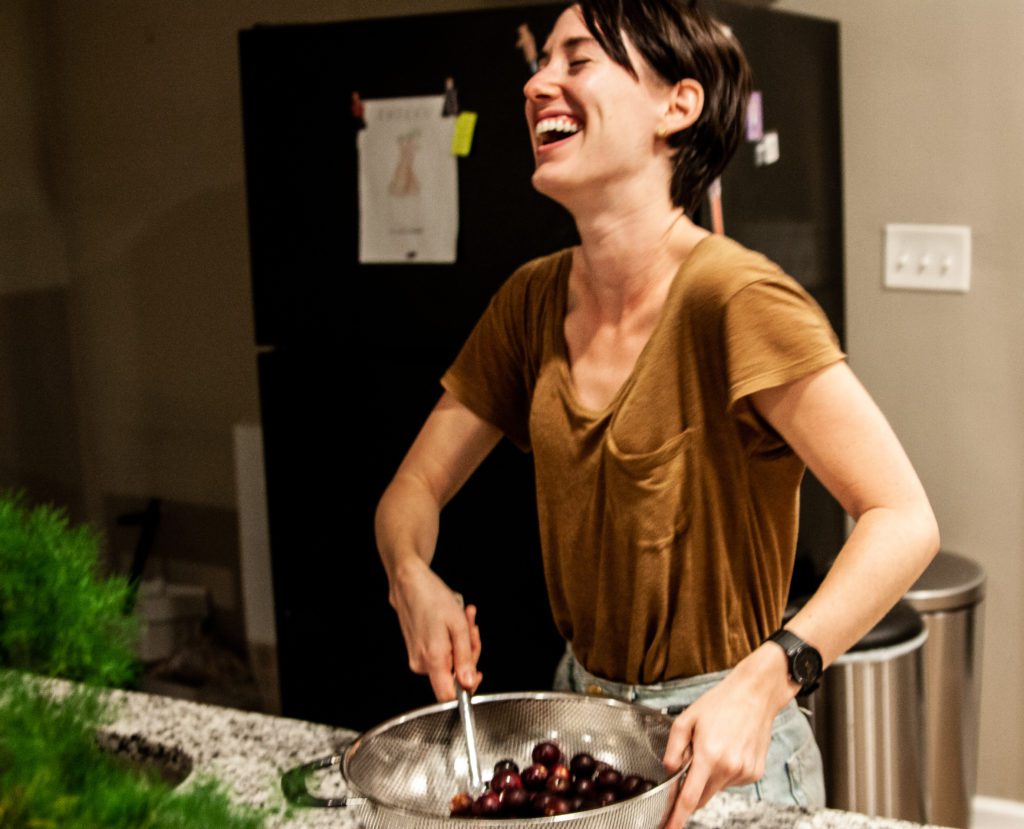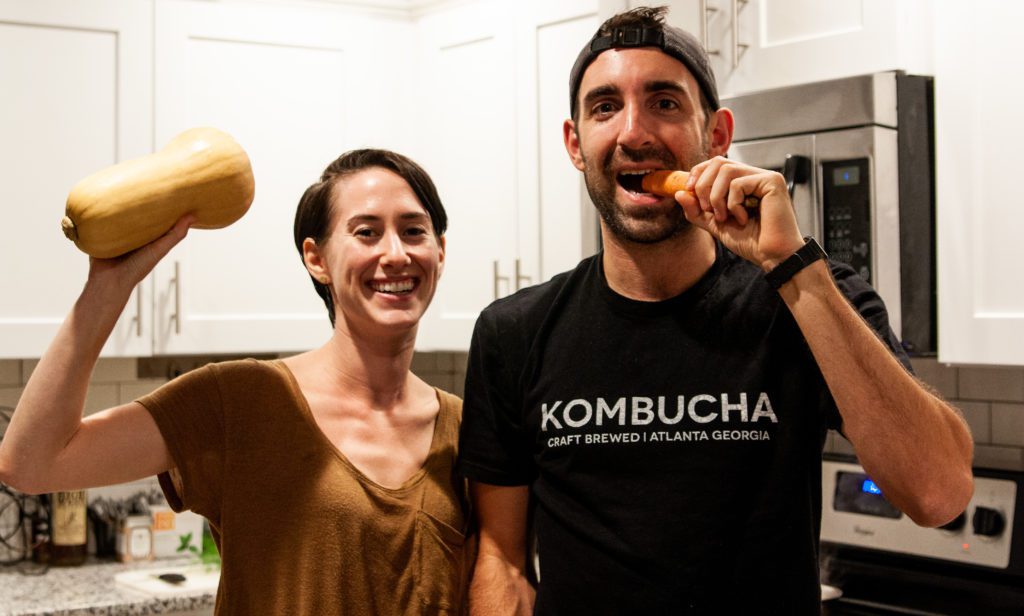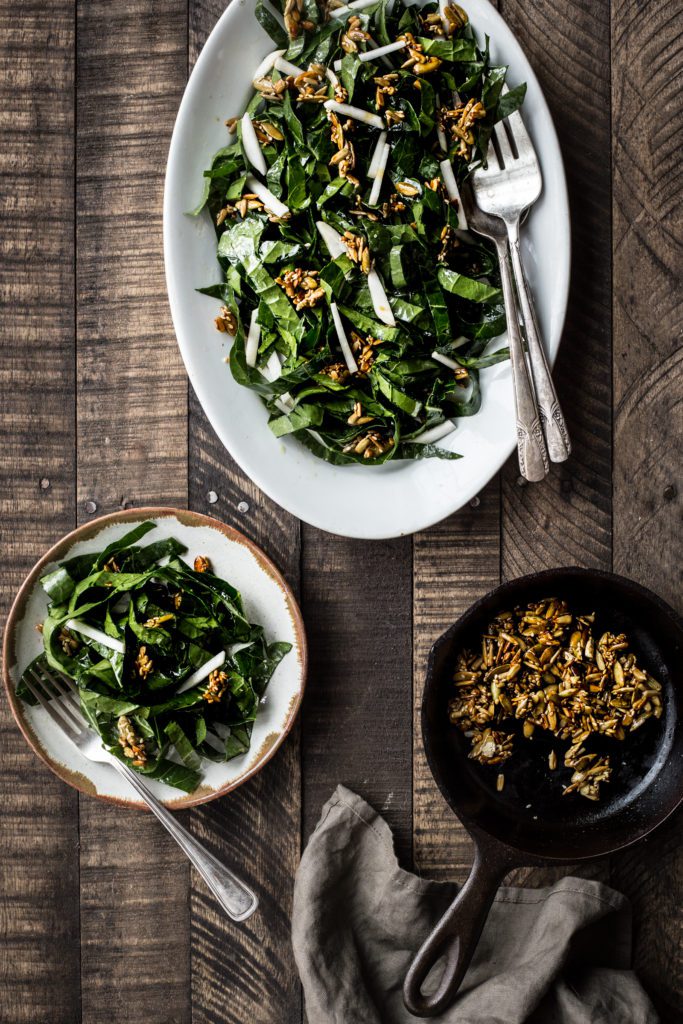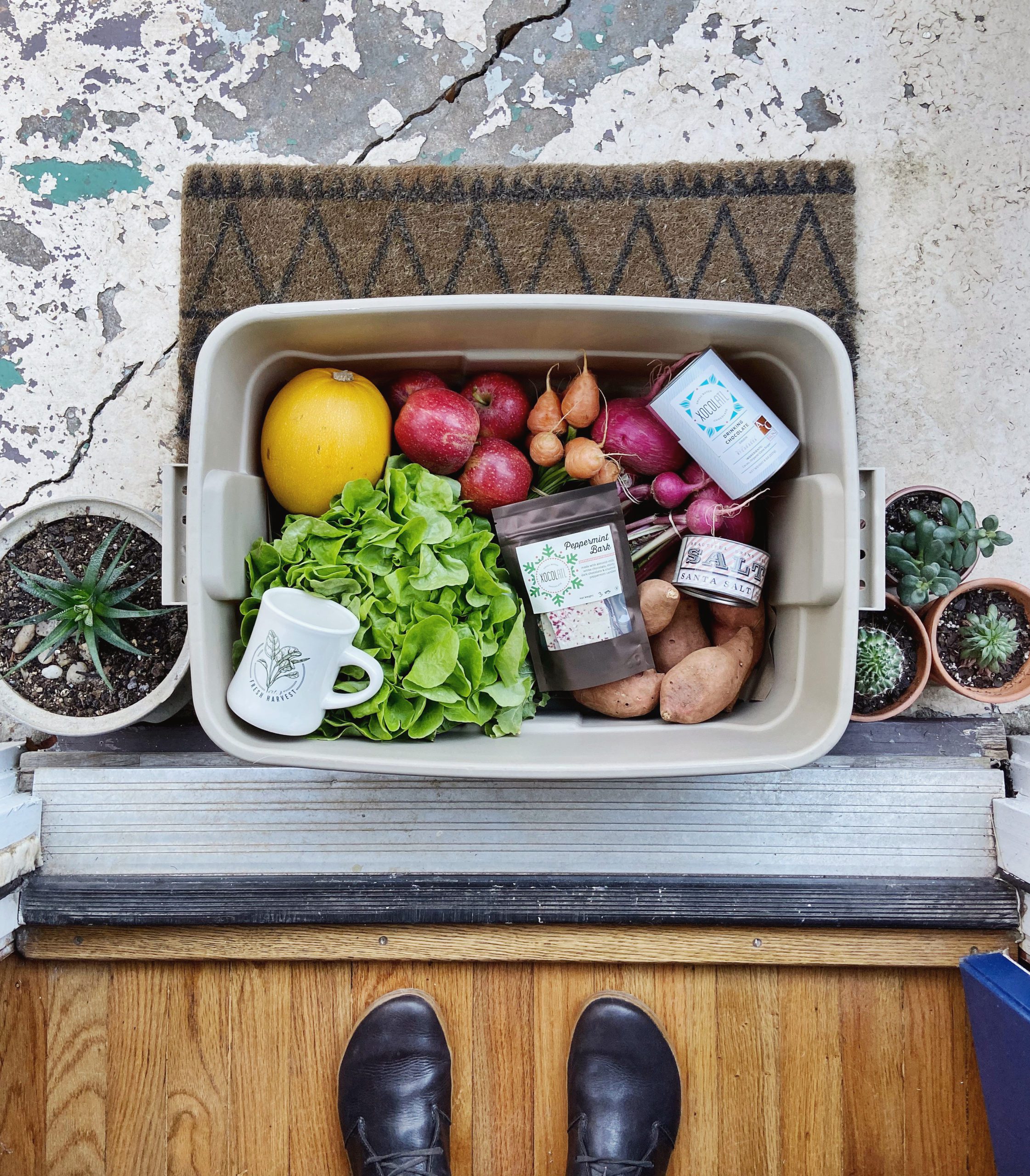My friend Callie is a little beam of light on a cloudy day. Like many other artists, she is filled with creative energy, which demands much of her time. In addition to painting, she is a student working several jobs and interning with a local art publication. So yes, she’s a busy woman. But in all the running around, two things in particular bring a certain level of order to her day: food and community. While each of these facets is valuable in itself, she has found a way to pair them to create a powerful method of balance in her everyday life, and I’ve personally been fortunate enough to come along for the ride. But before we dive into the specifics of this singles-focused strategy, let’s go back to the basics.
Food Routines & Community Foster Holistic Health
Besides our obvious need to eat, food has been a vehicle for routine and structure across all societies past and present. Everybody eats, often very predictably at certain times of the day. If done right, the act of preparing and eating a meal can serve as a form of meditation. I remember working as a prep cook, feeling zen-like as I chopped the tops off countless beets. Callie agreed that, “Food can be a good way to introduce routine, and that regularity makes me feel more stable and normal.”
On the other end of the spectrum, not eating leads to mental chaos, malnutrition, and sickness. Ever notice that when life gets a little hectic we tend to skip meals? Mental well-being and meals are likely more correlated than we know. Callie doesn’t claim to be a Michelin rated chef, but she does recognize the importance and implications of taking the time to prep and cook.
Sharing life with people is arguably just as important as eating. It’s evident that we humans are wired to interact with others. The happiest people on earth are more often than not those who feel connected to their families, friends, and neighbors. Alternatively, there are ample studies that show a degradation in health and quality of life when a person becomes isolated from the rest of society. This can be especially problematic for busy singles. “I think it’s a really sad thing that so many singles eat dinner alone every night. That’s depressing. Nobody wants to do that. It’s nice to have friends nearby.” Callie shared.
The Strategy and Its Benefits
Her approach to this dualistic problem combines thoughtful food preparation with intentional community interaction to create a unique cross-section of holistic health for herself and others. Each week, Callie carefully customizes her basket based on the meals she envisions. Pretty straight forward. But here’s the twist: she often orders enough for two. And that’s where I come in, a shoddy cook with little extra time to spend in the kitchen but a desire to eat well and save money versus blowing cash at restaurants every night. I cover the cost of the food and we both have (fantastic) meals for the week.
So where does the community aspect come in? Knowing what types of food someone likes and wants to avoid, where the cooking will be done, even down to talking through the menu and potentially eating meals together are all weekly activities that lead to in-depth dialogue and interaction. Agreeing to put someone else’s food in your mouth is a subtle act of trust, and more meaningful than we might perceive. The communal aspect also leads to a high degree of accountability. Under this agreement the chef is held accountable to cook, the consumer is accountable to buy, and food waste is minimized as a result of both parties feeling a healthy pressure to eat.
One of the biggest motivators for clinging to this strategy is economic in nature. For a health-minded person like myself who doesn’t take time to meal prep, the alternative is often the far more expensive option of eating out. “I want to get to the point where I eat out because I’ve planned to treat myself, not just because I caved,” Callie told me. Making certain meals can also be more economical than others. “The times that I get the most bang for my buck are when I make recipes that use a ton of produce in one dish.”
The first meal Callie made for us was a good example of that: an organic southwestern style mix of local ground chicken, corn, rice and beans, kale and spices. “There’s lots of meals like that, with a base carb like quinoa or rice that’s filling and good for you, along with vegetables and a meat. Those three categories fit into lots of things that batch really well. There’s so many flavors you could create, but a lot of them follow that simple bowl-casserole-soup structure.”
Callie’s Closing Advice
For anyone who’s nervous about cooking for others, Callie has some helpful tips. She explained, “I think single people get intimidated by cooking. I’ve had it happen where I put a lot of time and energy and money into cooking and it tastes bad. That’s discouraging and makes me not want to do it again, especially for someone else. But sticking to basics and no-fail strategies has really helped. A classic French preparation of produce is salt, pepper, olive oil, lemon juice, garlic, and rosemary. If it’s high quality food, then it doesn’t need much done to it. You can chop and roast it and it’s going to be good!”
And if all this still seems like too much extra work, why not start small? Make someone’s day by preparing them a single dish, maybe a dessert to enjoy together. They’ll love you and a special bond will begin to form. Another variation is simply to trade off prep weeks with another person. This could make for an exciting experience to share with a spouse, neighbor, or just a hungry friend named Joe.
Whether you do it in a highly structured way, or just for fun, Callie encourages, “There’s something in your brain that goes off when you cook and eat food with and for others. It’s an endorphin release, that feeling of a sense of community.” The bottom line is that bringing others into your food story is the healthiest, most enjoyable way to experience food. So here’s to never eating alone!
If you liked this post, check out our other Meal Prep Method posts, including cooking as Traveling Professional, a Stocked Staples Strategy, and a Low Waste Strategy!
